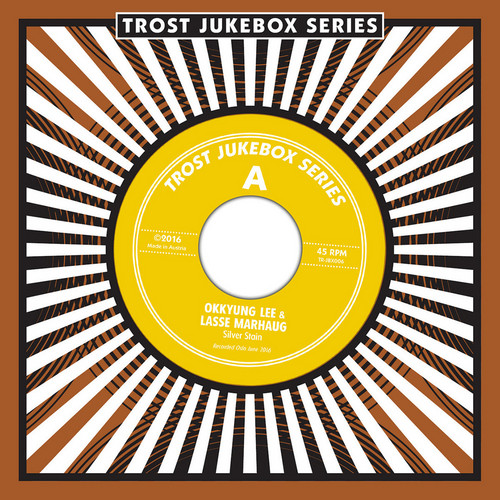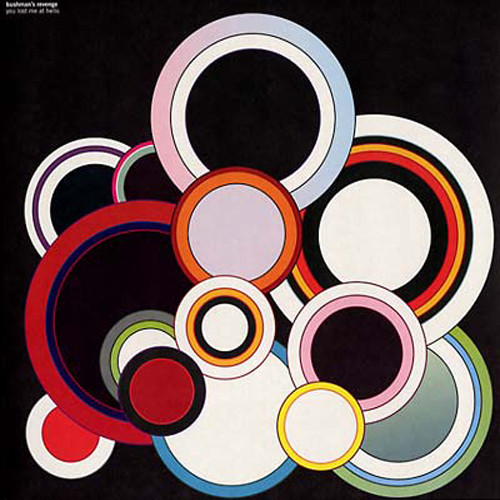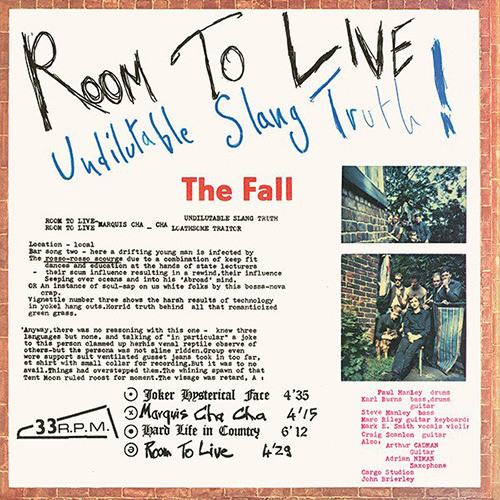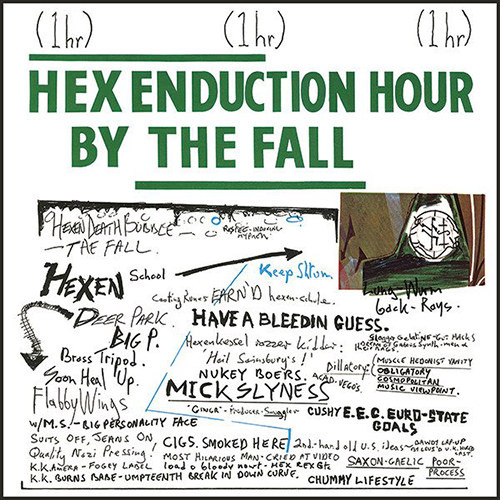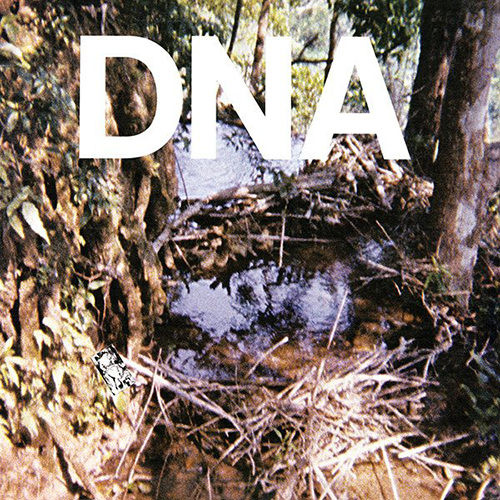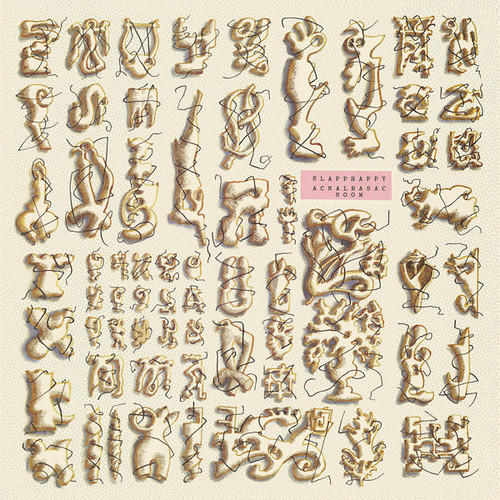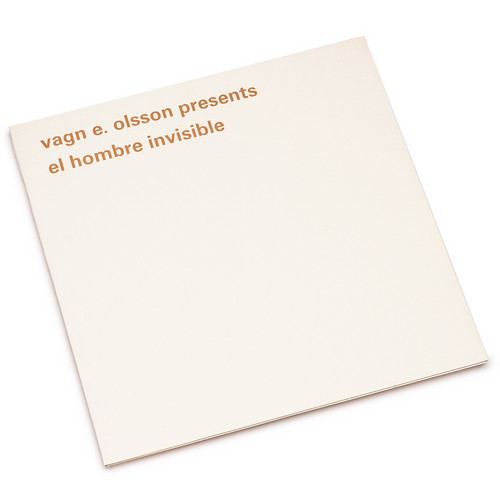Jukebox-Series 006
Trost continues its Trost Jukebox Series of 7"s. Okkyung Lee - cello; Lasse Marhaug - electronics. Recorded at Lasse's studio in Oslo. No overdubs, minimal editing. Mastered by Martin Siewert. Artwork by Lasse Marhaug.
Beyond the Black Crack
Paradigm Discs present a 40th anniversary vinyl reissue of Anal Magic And Rev. Dwight Frizzell's Beyond The Black Crack. It was originally released in mono, in an edition of 200 by Cavern Custom in 1976. Beyond the Black Crack was the concept of Reverend Dwight Frizzell, a musician, film maker, doctor of metaphysics and minister in the Universal Church of Life. Mentioned on the pivotal Nurse With Wound list, it remains a little known classic and one of the most unique listening experiences in mo…
Melaza
Fourth album from the free-spirited power trio that should need no long introduction by now, apart from the significant fact that Frank Rosaly has taken over the drum stool from Paal Nilssen-Love. No mean feat, seeing how the hand-in-glove rhythm section of Nilssen-Love and Håker Flaten has graced a large number of recordings over the years and built a solid reputation as one of modern jazz and improv's most reliable units. That said, the Chicago-based drummer is doing a remarkable job in bo…
Electric Komle - Live!
Recorded during a show at the Storyville jazz club in Molde in May 2012, this could very well be Bushman's Revenge's finest recorded effort during their 10 years as a band. Bringing new meaning to the concept of loose but tight, they blend the freedom of jazz with the energy of rock in the most convincing of ways as they race through numbers from all their previous four Rune Grammofon albums, taking no prisoners along the ride. Drummer Gard Nilsen and bassist Rune Nergaard are just as comfortabl…
Made in Norway
Classic double live album from this free-spirited international trio, this time expanded with American sax player Mars Williams. Recorded live at Oslo's Café Mono and at the Nattjazz festival in Bergen, both in May 2011, this fully shows why new drummer Frank Rosaly can be considered the perfect partner to founders Raoul Björkenheim (guitar) and Ingebrigt Håker Flaten (bass), not to mention Williams, who fit in perfectly with only a minimum of rehearsals before these concerts. The interplay is …
Ak Musick
Mental Experience present first ever reissue of AK Musick, originally released in 1972. Radical, freaked-out sound with hints of free-jazz, improv and avant-garde, AK Musick was an improv collective assembled by clarinetist Hans Kumpf to "make music in a very democratic way". The five players had a classical education but they were also influenced by avant-garde composers like Helmut Lachenmann and Johannes Fritsch. Their only album, AK Musick, was recorded at the famous Bauer Studios in just …
Thou Shalt Boogie!
Formed in 2003, the Oslo-based trio Bushman's Revenge (named after a type of mouth-searing hot sauce) are upfront about their love for the progressive rock of Cream and Jimi Hendrix, the galactic jazz of Sun Ra, Ornette Coleman, Sonny Sharrock and Alice Coltrane, plus the raw power of Black Sabbath and The Pixies. Thou Shalt Boogie! is their sixth album for Rune Grammofon, a relationship that began with 2009's You Lost Me at Hello (RCD 2083CD/(RLP 3083LP). Its velvety, warm sound was captured a…
A Little Bit Of Big Bonanza
This is the fourth album from Bushman's Revenge, and their third on Rune Grammofon. It's no secret that the label has a soft spot for this fabulous group and would wish nothing less than world domination for them. What they do seems to be an almost lost art when it comes to making records. Basically, meaning great musicians playing together in a proper recording studio, interacting and playing off each other. The tracks are mostly first or second takes, there is no editing and just a coup…
Jitterbug
This is the third album by Norway's Bushman's Revenge (Even Helte Hermansen, Gard Nilssen, Rune Nergaard). Like great records from Elephant9, Scorch Trio, Supersilent, In The Country, Spunk, Fire! and others, Jitterbug was recorded in the old fashioned way, meaning the musicians played together and interacted live in the studio with few or no overdubs. With classic recording studios closing down all over the world, this way of recording could indeed soon be a thing of the past, and the world …
You Lost Me At Hello
This is the second full-length release by Norway's Bushman's Revenge (Even Helte Hermansen, Gard Nilssen, Rune Nergaard). You Lost Me At Hello shows a distinct development from their debut Cowboy Music (Jazzaway, 2007). Founded by Hermansen and Nilssen in 2003 in their hometown of Skien, a couple of hours from Oslo, the trio aim to combine the jazz/improv background of the rhythm section with the rock/metal background of leader, composer and guitarist Hermansen to create their own expressive…
Room To Live
On Room To Live, The Fall take the hurried, all-or-nothing approach of their preceding Kamera Records releases to extreme ends. Forged via Mark E. Smith's continual disassembling of players and focus on previously unrehearsed material, the album collects The Fall's most experimental and improvisational recordings. As proclaimed on the album cover, "Undilutable Slang Truth!" would be revealed throughout Room To Live.
With the album's comparatively lo-fi production and always-teetering performance…
Hex Enduction Hour
Hex Enduction Hour was originally conceptualized as the death knell for The Fall. Beleaguered by career uncertainty and guided by vague premonitions of collapse, Mark E. Smith declared that one full hour was needed to thoroughly and perhaps finally state his case with The Fall. This framework resulted in a true classic of the post-punk era and an album that gave The Fall their first taste of album chart success, thankfully removing surrender from the equation.Recorded in haste in both Iceland an…
A Taste Of DNA
First-ever reissue of an important slab by DNA who were among NYC’s handful of influential No Wave iconoclasts documented in the Brian Eno-produced No New York compilation.
First Utterance
"This long overdue double-disc compilation not only makes Comus' superlative First Utterance LP widely available at an affordable price for the first time, it also includes the legendary band's oft-ignored second album and a handful of rare tracks, singles and b-sides. Previously, the only way to hear much of this music was to track down the original Pye/Dawn LPs, which frequently trade hands for upwards of a thousand dollars for a VG+ copy, or to buy one of the exorbitantly priced bootleg CD re…
Fog Study
An inner study of fog. A slow descent through a hazy interior lined with various horns, scraps of breath, looped feedback, and layers of tape hiss.
Matthew P. Hopkins (Australia, 1978) is an artist based in Melbourne, working with sound, visual art, and writing. His audio work sits loosely within the realm of concrete music.
Acnalbasac Noom
Tapete present a reissue of Slapp Happy's Acnalbasac Noom, originally released in 1980. Left-wing intellectual film critic Uwe Nettelbeck, who had good connections to Polydor, had set up his own studio in rural Wümme, disrupting the mainstream with pioneering sounds by the likes of Faust, inventively engineered by the "boffin's boffin", Kurt Graupner. By the time Anthony Moore, one of Nettelbeck's charges, approached his third album in 1972, Polydor's accounting department was fast losing p…
Sort of
*LP version. 180 gram vinyl. Includes CD. Edition of 500.* Tapete present a reissue of Slapp Happy's Sort Of, originally released in 1972. Left-wing intellectual film critic Uwe Nettelbeck, who had good connections to Polydor, had set up his own studio in rural Wümme, disrupting the mainstream with pioneering sounds by the likes of Faust, inventively engineered by the "boffin's boffin", Kurt Graupner. By the time Anthony Moore, one of Nettelbeck's charges, approached his third album in 1972, Pol…
Dzyan
Their debut LP from 1972. In November 1971 Dzyan 'nailed' an exclusively recording contract with the Aronda label. The band recorded their debut album in February 1972. Making an exploration in long space-rock improvisations relied on jazz grooves and weird elektro-acoustic sounds, creatively blended elements of different styles from Zappaesque jazz - flashes of Zappa's Hot Rats to facets of "Court" King Crimson, full-blown early fusion ala Nucleus, Magma and Soft Machine influences and even som…
Ronde matutinale à Amillis / Berenice
Michel Vogel explores the resonant possibilities of metallic percussion, sculpting shimmering, meditative soundscapes that blur the line between music and pure sound: alpha-wave improvisations for "prepared" gongs and self-built metal instruments
El Hombre Invisible
Long awaited debut album from Copenhagen maverick composer; musician, poet and former No Knox member: Vagn E. Olsson. This dauntless flaneur has since the late seventies worked in his own idiosyncratic and highly personal style, combining elements of crudeness and primitive beauty with swirling riffs and complex rhythm tapestries. For Vagn E. Olsson presents El Hombre Invisible, the composer has hand picked a versatile group of musicians from seminal Danish bands such as Sods, Cockpit Mus…
